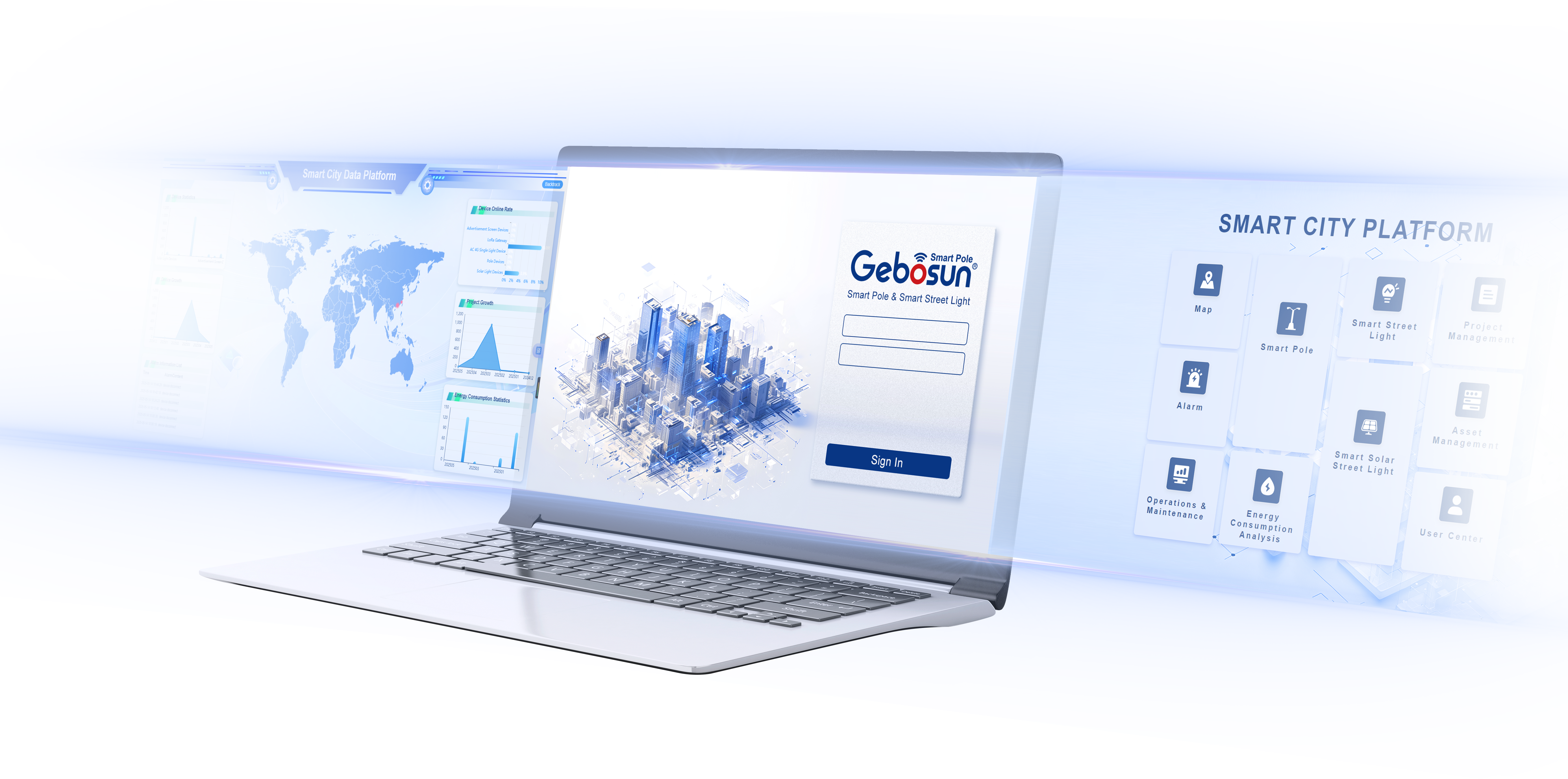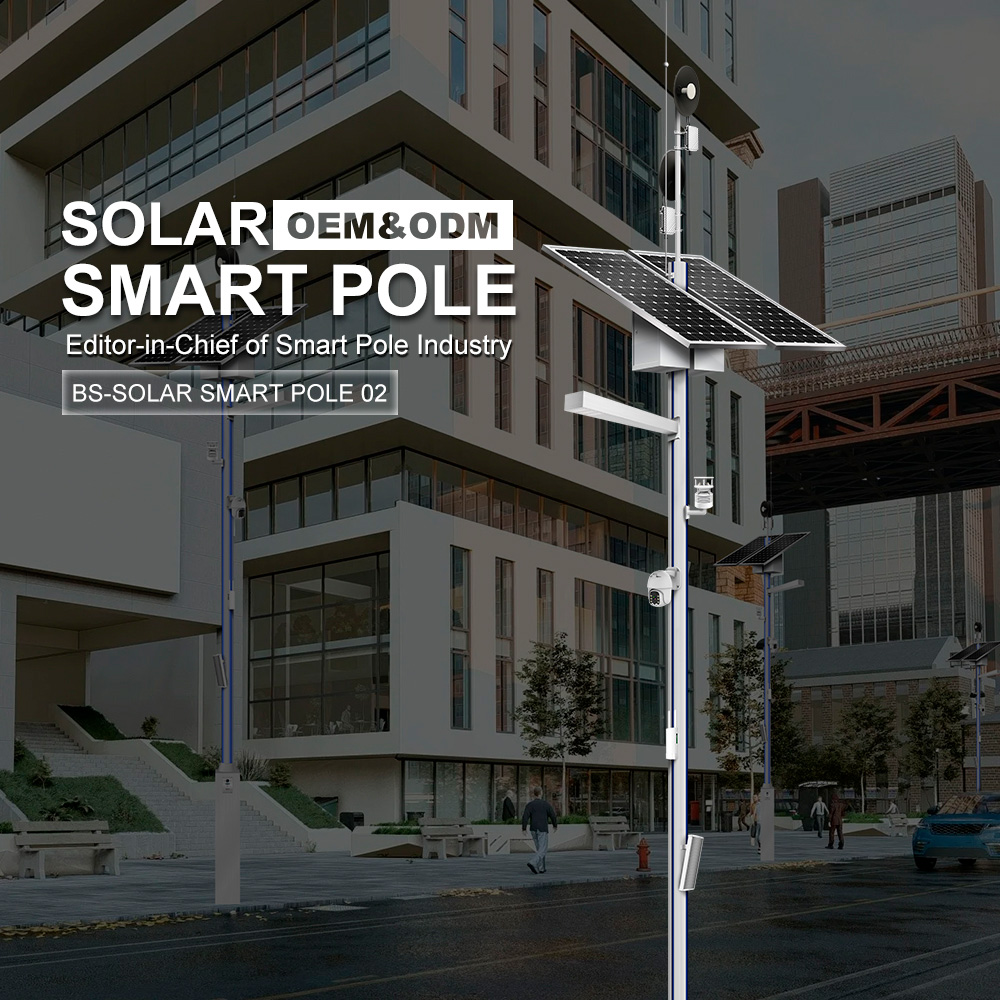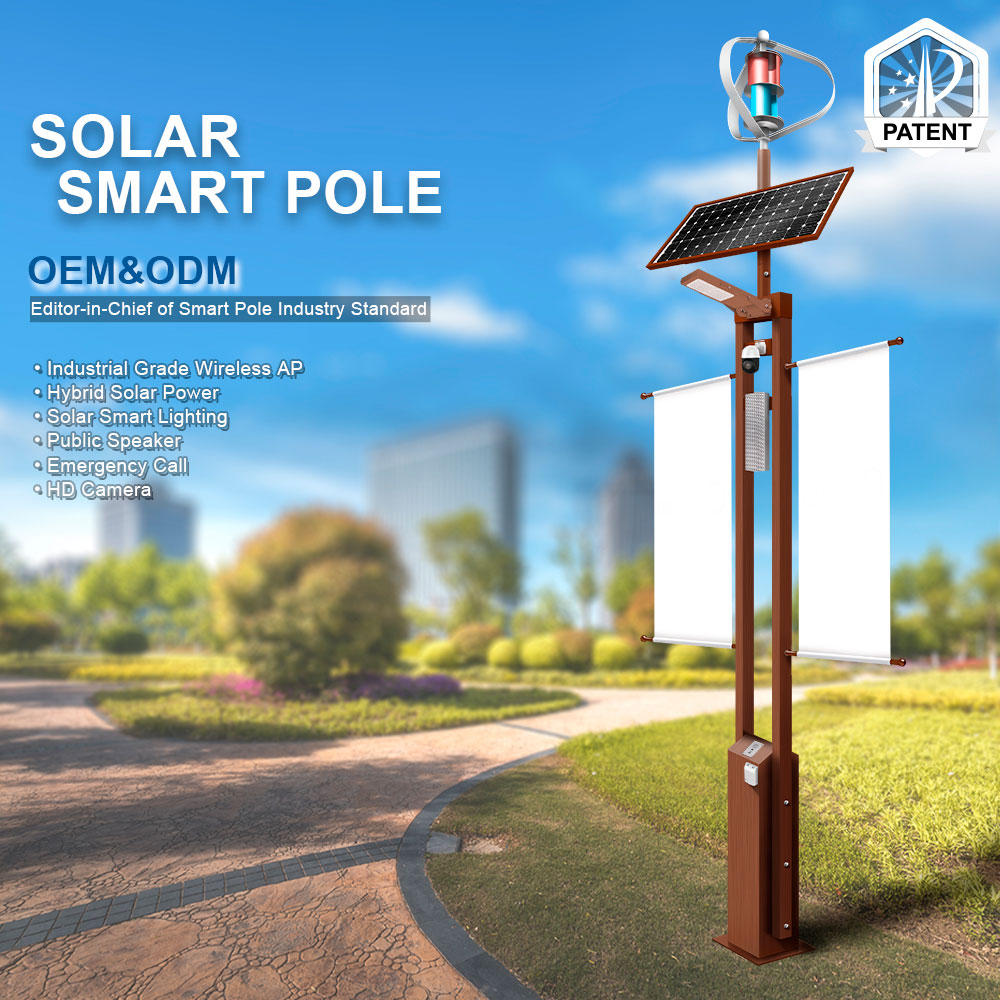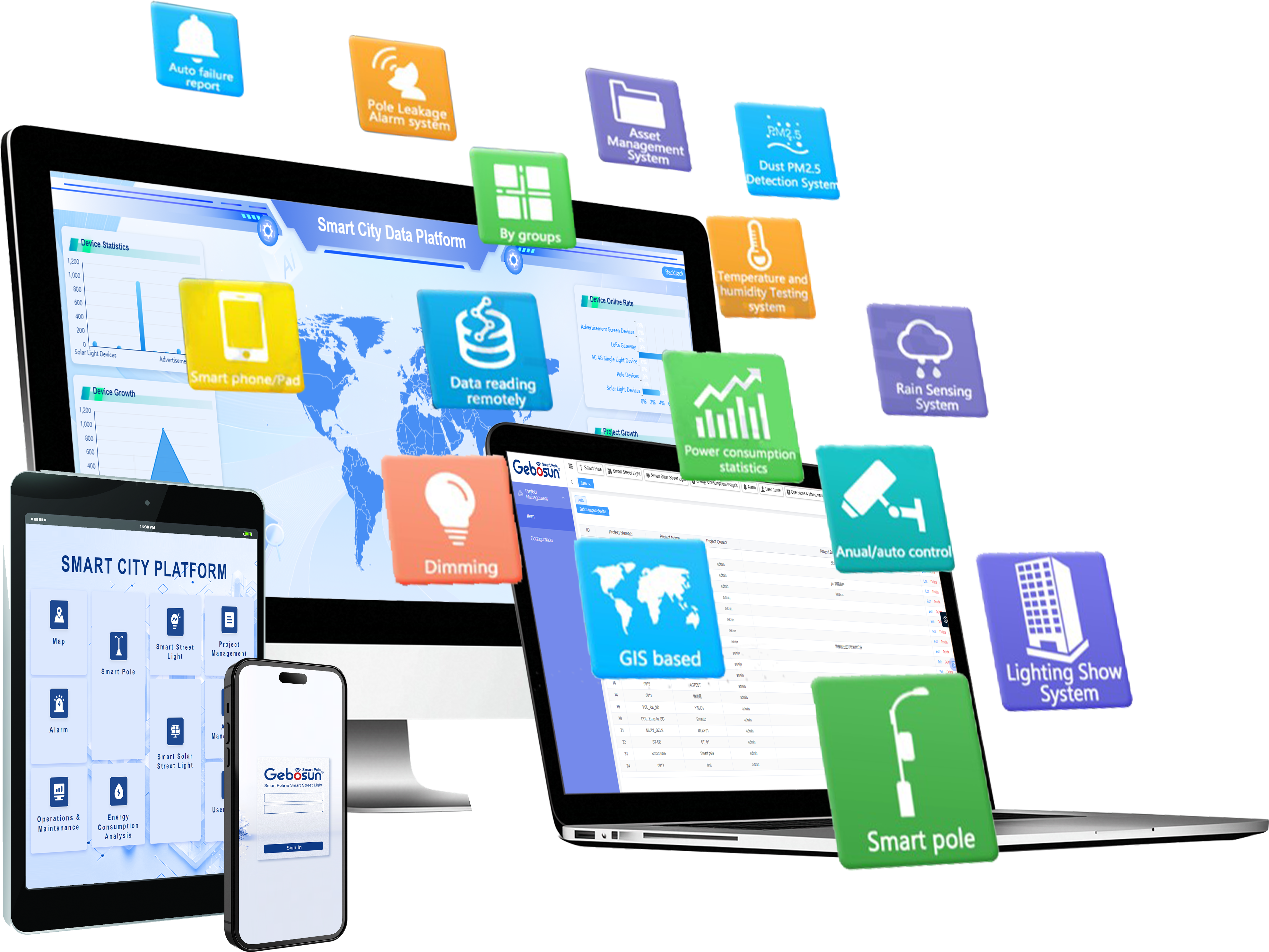Solar Smart Pole System
FAQs About Solar Smart Pole System
- What is a Solar Smart Pole System?
- A Solar Smart Pole System is an off-grid, energy-efficient pole equipped with solar panels, lithium batteries, LED lighting, and IoT modules (e.g., sensors, cameras, Wi-Fi). It connects to a smart city control system for remote monitoring, data collection, and intelligent management.
- How does the smart city control system work with the solar smart pole?
- The control system serves as a centralized platform that remotely manages each pole’s lighting schedule, sensor data, fault alerts, energy usage, and live feeds. It allows real-time decision-making and centralized control over a large deployment of poles.
- What are the energy storage options?
- Most systems use lithium-ion or LiFePO₄ batteries, offering long life (5–8 years), deep cycle performance, and autonomy for 3–5 days without sun.
- What kind of data does the pole collect?
- Depending on configuration, it can collect:
- Lighting performance data
- Energy consumption statistics
- Environmental data (PM2.5, temperature, humidity)
- Foot traffic and vehicle flow
- Live video streams from cameras
- Can I monitor and control the pole remotely?
- Yes. The smart city control system enables remote control via cloud or local networks (e.g., LoRa, 4G, NB-IoT), allowing:
- Real-time lighting adjustments
- System diagnostics and alerts
- Sensor data access
- Remote reboot or restart of faulty modules
- How does the system handle module failures or malfunctions?
- The control system generates real-time alerts for component malfunctions or power issues. Maintenance teams can identify the exact location and fault type instantly—reducing downtime and improving efficiency.
- Can the system scale with city expansion?
- Absolutely. The modular nature of smart poles and cloud-based control platforms ensures easy scalability. Cities can gradually expand their smart pole networks while maintaining centralized control.




